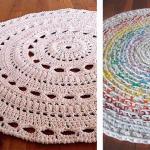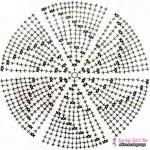Combustion of acetate fiber. How to distinguish natural fabric from synthetic
It is usually not difficult to distinguish synthetic fabric from natural fabric in a store. Just read the composition of the material on the price tag, or ask the seller. In addition, natural fabrics are often much more expensive than synthetics. However, there are quite a lot of situations where the composition of the tissue is unknown. How can you find out what the fabric is made of? Read under the cut.
Serious doubts regarding the composition of the fabric may arise if you buy a piece secondhand, or if you discover large deposits of fabric of unknown origin at home. :) Sometimes I doubt the composition of the fabric even in the store. For example, if the cotton feels too silky or stretchy. Or if it doesn't wrinkle at all.
But why is it so scrupulous to find out the true composition of the material? Firstly, to understand the fabric you have chosen. And secondly, . I am one of them. I feel hot in synthetics, but the worst thing is allergic reactions. Of course, there must be an integrated approach, and nutrition, as well as cosmetics, should also be as natural as possible. But clothing can be a big factor in combating unpleasant skin reactions.
In my opinion, with experience, many fabrics can be identified by touch. For example, natural wool has a very recognizable smell and is easy to recognize by touch. But, of course, you can always run into a very well-made synthetic fabric. How to determine the composition of the fabric? For this we need... Matches or a lighter. Yes, yes, we will check the composition of the fabric this old-fashioned way.
For my experiment I selected:
Viscose lining fabric.
Unnamed fabric, synthetic in my opinion.
Unnamed chiffon, similar to synthetics.
Let's start the experiment. General rule for all natural fabrics: the ashes should be ground into powder. The ashes of mixed fabrics cannot be ground into powder; lumps will still remain between your fingers.
How should wool behave?
The wool curls up into a ball and emits a burnt lint smell.
Result: I admit that wool was the most difficult for me. Since almost all wool was added, this slightly changed the reaction of the fabric to ignition. And, as you can see, the ashes were not ground into powder.
Cotton should burn like paper.
Result: a piece of fabric caught fire like paper, the ashes were perfectly ground into powder. Confirming the composition of cotton was very simple.
The burning silk should “jump” above the match and not emit any odor.
The easiest way to determine what fiber a purchased fabric is made from is to use a combustion test. Natural fibers burn and char, turning into ash. Synthetic ones melt, leaving a hard lump. Cotton and linen fabrics(from plant fibers), as well as wool and silk (from animal fibers) burn equally.
Acetate and acrylic fabrics
They burn and melt in the flame and outside it, when they have already been removed from the flame. After burning, a solid lump remains. Acetate fabric can be easily identified by placing a piece of it in nail polish remover: the acetate will dissolve in it.
Polyester, nylon and other synthetic materials
They do not burn, but only melt in the flame or a short time after removing it with a chemical smell, leaving a hard lump.
Wool and silk
They burn slowly, charring and curling into rings. Sometimes they only burn while in the flame. They smell strongly and not very pleasantly, like burnt hair or feathers, and leave brittle ash.
Cotton and linen
They burn quickly followed by a glow. When burned, they smell like burnt paper, forming soft gray ash.
Clothing made from linen fabric is especially valued by wearers due to its breathability, wear resistance, smooth surface, hygroscopicity and fairly high strength. The best method to verify the authenticity of the material is a laboratory test. But this method requires considerable time and money. Therefore, when buying clothes or household items, it is better to resort to offline methods.


Methods for identifying linen fabric
Visual. Linen material has a shiny appearance, while cotton fabrics have a matte surface.
Tactile. Linen fabrics are quite stiff and cause a slight chill when in contact with the body.
To break. To conduct the study, it is necessary to remove the thread and break it. The linen thread will have a pointed appearance. In the case of cotton, a fluffy tassel of short and even fibers remains at the end of the thread.
Crumpling. Take the thread in your hand and close it into a fist for a few seconds. Linen thread produces more folds compared to cotton thread.
Combustion. Light the fabric and wait a few seconds. Linen-based material emits virtually no odor, while cotton smokes and has a strong odor.
Color. Natural linen fabrics without dyes are available in three variations - ivory, light brown bark and shades of gray.
Find out more information about the properties of flax, as well as others natural materials, you can contact the company’s specialists “ Vulcana».
Everyone knows that fabrics come in different compositions. They can be combined into three groups - natural, non-natural, mixed. Fabrics made from natural fibers are made from natural raw materials - cotton, linen, silk, wool, etc. Viscose can also be classified as a natural fabric.
Non-natural fabrics are made from chemically produced fibers - acetate, polyester, nylon, lavsan, nylon, etc. Blended fabrics may contain several fibers of different origins. Thanks to the latest technologies synthetic fabrics do not differ in appearance from natural fabrics, but knowing the composition of the fabric is very important in order to know how the fabric will behave in the product and how to care for it. Today we will talk about how to determine the composition of fabric by burning.
Cotton and linen. Fibers of plant origin. Cotton from the cotton plant, flax from the flax ear. The fibers burn quickly with a bright flame followed by a glow and a small amount of white smoke. After the flames die out, they smolder for a long time, producing dark gray ash and the smell of burnt paper. Flax smolders worse and dies out faster, leaving virtually no ash or pungent odor.
Cotton


Linen



Natural viscose .
They are made from wood, or rather from cellulose, and from it they produce viscose. This fiber has all the properties of cotton, although it is produced chemically; viscose can safely be classified as a natural fabric. So, it burns very quickly. When the flame dies out, it smolders for a very long time, forming a pungent, thick smell of burnt cotton wool, leaving gray smoke and ash that easily crumbles in your hands.
Viscose




Wool and silk. Animal fibers. Wool is produced from the hair of animals, and in the production of silk, threads produced by the silkworm are used. When burned, these fibers behave the same. They burn slowly, the fibers seem to curl up. Silk without a flame goes out immediately. Wool, after fading, does not smolder. The resulting coal can be easily crushed with your fingers. When wool burns, the smell is like burnt hair or feathers; when silk burns, it smells like burnt horn.
Wool



Silk



Synthetic materials. The initial raw materials for production are oil and gas processing materials (types of fibers - polyamide, polyvinyl chloride, polyester, etc.). Obtained chemically. What they have in common is that when they burn, they melt, forming black smoke and an influx, sintering into a lump that cannot be crushed with your fingers after extinguishing. Distribute sour smell synthetics.
Polyester



Acetate and acrylic fabrics. They burn and melt both in the flame and outside the flame. They also leave behind a dark influx and a hard lump. For example, acetate fiber also dissolves in acetone.
Blended fabrics. They will burn the same way as the predominant fiber in the composition burns. For example, if the fabric is wool with the addition of lavsan, then it will smell like wool, but the lump will not completely crumble after it fades.
Although we ourselves sometimes do not mind being deceived. In pursuit of a low price, instead of quality materials, we often give preference to cheaper fabrics. At best, such savings result in discomfort when wearing, at worst - allergies and other health problems.
What fabrics should you buy from when building your wardrobe? How to avoid falling for the bait of unscrupulous sellers? Is it possible to determine the composition of a thing without laboratory tests? We talked about this and much more with a candidate of technical sciences specializing in “Technology of textile materials, clothing and knitwear» Galina Skripko on AiF.ru.
It's not cold in winter, it's not hot in summer
Natalya Kozhina, AiF.ru: Galina Alekseevna, what is “healthy clothing”, which in fact should make up our wardrobe?
Galina Skripko: Clothing is considered healthy if the textile material is made from natural raw materials (cotton, wool, flax, natural silk, etc.) or from material with a high content of it.
It is always comfortable to wear such clothes: it is not cold in winter, and not hot in summer, because the material containing natural fibers, has unique property- keep warm for a long time, slowly cooling, and vice versa, keep cool, slowly warming up. Such material does not have a negative effect on the human biofield, since natural fibers are not capable of accumulating static tension. Due to the high breathability and ability of the material to absorb moisture, the clothing becomes hygienic.
N.K. “AiF.ru”: Is it possible to determine good and high-quality fabric only by its price?
G.S.: No. The initial price for the product is determined by the manufacturer, the final price is determined by the distributor. Both focus on consumer demand when determining prices. In this case, less fashion clothes, although of high quality, can be offered to the buyer at a lower price than a branded one made from lower quality raw materials.
Sometimes, in order to increase sales, manufacturers and distributors of textile products directly deceive the buyer by indicating deliberately false information about the fiber composition of the material on the product label or price tag.
N.K. “AiF.ru”: If price is not an indicator, then what factors can help determine the quality of the fabric?
G.S.: Subjectively, the quality of the material can be determined by appearance and to the touch. Some natural fibers have a characteristic odor. For example, wool has its own smell, it is difficult to describe it, but when we smell it, we remember it. Why does wool smell? Because she has fatliquoring agents, these products have such a specific smell. Cotton smells fresh.
The naturalness of modified fabrics can be determined by external signs difficult even for a professional. Thus, fabric or knitwear made from mercerized cotton (Mercerized cotton is cotton that undergoes alkali treatment. The fiber becomes thinner, shrinks less and is more even) in appearance differs little from material made from polyester cotton-like fiber.
In everyday conditions, to determine the type of clothing fibers, we can recommend a method based on the characteristics of combustion and the characteristic odor of the combustion residues of the fibers. For example, cotton yarn burns quickly, leaving a burnt paper smell; the burnt residue is easily crushed between your fingers. Yarn made from polyester fibers is characterized by rapid attenuation, the burnt residue has the appearance of a solid black ball, and there is no smell. The presence of fur or natural silk in yarn is determined by the characteristic smell - burnt horn. If the combustion residue does not crumble when rubbed between your fingers, then the yarn contains synthetics.
N.K. “AiF.ru”: Often in a store you can see things made of 100 percent cotton (i.e., identical in composition), but at the same time they will feel completely different to the touch, why? In this case, what fabric should you choose?
G.S.: Everything is correct. Same in fibrous composition textile materials can have different textures. Texture is determined by the density of the fabric and its thickness. The density of the fabric depends on the density and type of weave of the yarn, and the thickness depends on the thickness of the yarn. If speak about cotton fabrics, then their range is very wide: calico, chintz, satin, crepe, cashmere, flannel, flannel, cambric, etc. The thinnest and most expensive fabric is cambric. It is made from fine, tightly spun cotton yarn, which is obtained from high-quality long-staple cotton. When assessing the quality of the fabric or material of the product, you should carefully examine its surface for defects: thickening of the yarn in limited areas, fluffiness (the presence of small lumps of tangled fibers on the surface of the fabric), knots, violations in limited areas of the density of the fabric due to vacuum or compaction between the interweaving of threads , the presence of distortions in the direction of the threads, uneven coloring, displacement of the pattern, etc.
Fabric and knitwear, the yarn of which is made from high-grade fiber, has a smooth surface. The denser the material, the less it deforms during product operation. However, dense material does not mean thick.
W, CO, CVI - designations that are important to know
N.K. "AiF.ru": What fabric should be used when creating a children's wardrobe?
G.S.: The production of children's clothing requires its compliance with sanitary and hygienic rules and regulations (SanPin), according to which children's underwear up to size 32 and hosiery up to size 16 should not contain synthetic fibers. It is allowed to replace part of the cotton with artificial fiber - viscose:
- up to 10%, for toddler underwear (up to size 28) and hosiery up to size 16;
- up to 30%, for children's underwear up to size 32.
N.K. “AiF.ru”: What fabric composition is ideal for underwear and swimwear?
G.S.: Underwear made from 100% cotton jersey is considered ideal. To increase the elasticity of knitwear, it is permissible to add elastic thread (elastane, spandex) to the yarn, the content of which should not exceed 2-1%. Underwear made from such knitwear is not only hygienic, but also more comfortable, as it fits tightly to the body.
N.K. “AiF.ru”: Galina Alekseevna, please tell us about the symbols that are often used on labels, what do they mean?
G.S.: The designation of raw materials must contain the full name of the types of fibers or their abbreviated designation. The abbreviated designation is mainly used by foreign manufacturers. For example, cotton (cotton) - CO, ALG; flax (flax) - Li; wool (wool) - W or WP, WL, WA (alpaca, llama, angora wool): silk (silk) - SE. For artificial chemical fibers the following designations are used: viscose (viskose) - Vis, VI; high-modulus fiber (Siblon, Modal) - CVI, MD; acetate - AC. Synthetic fibers designate: polyester (polyester) - PE, PE, PES, PL; polyacrylonitrile (acrylic) - PAN, PAC, RS; polyamide (polyamide) - PA, RA; polyurethane (polyurethane, elastane) - PU, PU, EA.
In duplicated canvases, the composition of the raw material is indicated separately for each layer.
When secondary raw materials are included in the material, the words “recycled raw materials” and its type must be indicated.






